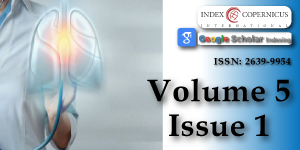Comparison of clinical, chest CT and laboratory findings of suspected COVID-19 inpatients with positive and negative RT-PCR
Main Article Content
Abstract
Introduction: COVID-19 is an infectious disease caused by the severe acute respiratory syndrome coronavirus 2 and it was first reported in China. The aim of this study was to compare clinical features, chest CT findings and laboratory examinations of suspected COVID-19 inpatients according to RT-PCR analysis.
Methods: Demographics, comorbidites, symptoms and signs, laboratory results and chest CT findings were compared between positive and negative groups. The study included 292 patients (134 females, 158 males) suspected of COVID-19. All statistical calculations were performed with SPSS 23.0.
Results: 158 (54.1%) of the cases were male and 134 (45.9%) were female. Their ages ranged from 17 to 95 years, with an average of 50.46 ± 20.87. A symptom or sign was detected in 86.3% of all patients. The chest CT images of 278 patients were analyzed. Chest CT was negative in 59.2% of patients with positive RT-PCR and 43.9% of patients with negative RT-PCR results. Chest CT findings were atypical or indeterminate in 22.4% of patients with positive RT-PCR results and 20% of patients with negative RT-PCR analysis. ALP, bilirubine, CRP, eosinophil count, glucose, CK-MB mass and lactate were significantly lower in patients with positive RT-PCR test. LDH, lipase, MCV, monocyte, neutrophil count, NLR, platelet, pO2, pro-BNP, procalcitonin, INR, prothrombin time, sodium, troponin T, urea, WBC were significantly lower in patients with positive RT-PCR test results.
Conclusion: The diagnosis of COVID-19 is based on history of patient, typical symptoms or clinical findings. Chest CT, RT-PCR and laboratory abnormalities make the diagnosis of disease stronger.
Article Details
Copyright (c) 2021 Perincek G, et al.

This work is licensed under a Creative Commons Attribution 4.0 International License.
Anjorin AA. The coronavirus disease 2019 (COVID-19) pandemic: A review and an update on cases in Africa. Asian Pac J Trop Med 2020; 13: 199-203.
Akçay Ş, Ozlu T, Yılmaz A. Radiological approaches to COVID-19 pneumonia. Turk J Med Sci. 2020; 50: 604-610. PubMed: https: //pubmed.ncbi.nlm.nih.gov/32299200/
Abobaker A, Raba AA, Alzwi A. Extrapulmonary and atypical clinical presentations of COVID‐19. J Med Virol. 2020; 1–7. PubMed: https: //www.ncbi.nlm.nih.gov/pmc/articles/PMC7300507/
Özdemir M, Taydas O, Öztürk MH. COVID-19 enfeksiyonunda toraks bilgisayarlı tomogra_bulguları. J Biotechnol and Strategic Health Res. 2020; 1: 91-96.
Terpos E, Ioannis Ntanasis-Stathopoulos, Ismail Elalamy, Efstathios Kastritis,Theodoros N. Sergentanis1, et al. Hematological findings and complications of COVID-19. Am J Hematol. 2020; 95: 834-847. PubMed: https: //pubmed.ncbi.nlm.nih.gov/32282949/
British Thoracic Radiology Society. COVID-19 CT Classification. 2020.
Ai T, Yang Z, Hou H, Zhan C, Chen C, et al. Correlation of chest CT and RT-PCR testing in coronavirus disease 2019 (COVID-19) in China: A report of 1014 cases. Radiology. 2020: 26: 296: E32-E40. PubMed: https: //pubmed.ncbi.nlm.nih.gov/32101510/
Fang Y, Zhang H, Xie J, Lin M, Ying L, Pang P, et al. Sensitivity of chest CT for COVID-19: comparison to RT-PCR. Radiology. 2020; 296: E115-E117. PubMed: https: //pubmed.ncbi.nlm.nih.gov/32073353/
Xa D, Xub J, Zhouc J, Qingyun Long Q. Chest CT findings of COVID-19 pneumonia by duration of symptoms. Eur J Radiol. 2020; 127: 109009. PubMed: https: //pubmed.ncbi.nlm.nih.gov/32325282/
Long C, Xu H, Shen Q, Zhang X, Fan B, Wang C, et al. Diagnosis of the Coronavirus disease (COVID-19): rRT-PCR or CT? Eur J Radiol. 2020; 25: 108961. PubMed: https: //pubmed.ncbi.nlm.nih.gov/32229322/
Ma H, Hu J, Tian J, Zhou X, Li H, Laws MT, et al. A single-center, retrospective study of COVID-19 features in children: a descriptive investigation. BMC Med. 2020; 18: 123. PubMed: https: //pubmed.ncbi.nlm.nih.gov/32370747/
Cai Q, Huang D, Yu H, Zhu Z, Xia Z, et al. COVID-19: Abnormal liver function tests. J Hepatol. 2020; 73: 566-574. PubMed: https: //pubmed.ncbi.nlm.nih.gov/32298767/
Li Q, Dinga X, Xiab G, Chend HG, Chena F, et al. Eosinopenia and elevated C-reactive protein facilitate triage of COVID-19 patients in fever clinic: A retrospective case-control study. EClinicalMedicine. 2020; 23: 100375. PubMed: https: //pubmed.ncbi.nlm.nih.gov/32368728/
Zhua Z, Caib T, Fanb L, Loub K, Huab X, et al. Clinical value of immune-inflammatory parameters to assess the severity of coronavirus disease 2019. Int J Infect Dis. 2020; 95: 332–339. PubMed: https: //pubmed.ncbi.nlm.nih.gov/32334118/
Bonetti G, Manelli F, Patroni A, Bettinardi A, Borrelli G, et al. Laboratory predictors of death from coronavirus disease 2019 (COVID-19) in the area of Valcamonica, Italy. Clin Chem Lab Med. 2020; 58: 1100-1105. PubMed: https: //pubmed.ncbi.nlm.nih.gov/32573995/
Fu L, Wang B, Yuan T, Chen X, Ao Y, et al. Clinical characteristics of coronavirus disease 2019 (COVID-19) in China: A systematic review and meta-analysis. J Infect. 2020; 80: 656–665. PubMed: https: //pubmed.ncbi.nlm.nih.gov/32283155/

